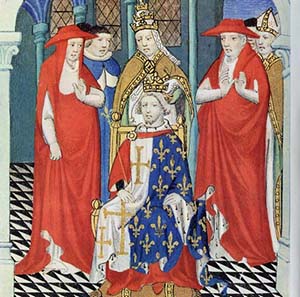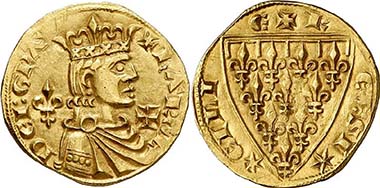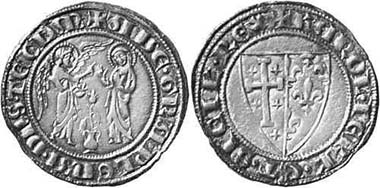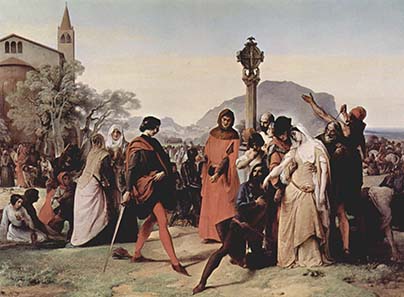by courtesy of the company Gorny & Mosch
On December 13, 1250, Frederick II of Sicily, marvel of the world, died at Fiorentino Castle. He had had 19 children but only two of them became politically significant. His son Conrad died already four years later, excommunicated by the Pope. Hence, his half brother Manfred assumed power. He was the son of an insignificant aristocrat from Piedmont his father had married while already lying on his deathbed to ensure Manfred being legitimate. But Manfred, too, suffered excommunication by the Pope who wanted to drive out the loathsome Stauffer from Sicily once and for all. In order to achieve his goal, the Pope looked for a new ruler over Sicily. First, he promised the prosperous kingdom to the son of an English king who, however, had little interest in expelling the Stauffer from the Mediterranean island. Pope Urban IV, therefore, turned to France, to a brother of the king with ambitions far too great for his small territories.
The Pope crowns Charles of Anjou as ruler over Sicily. Source: Wikipedia.
Charles of Anjou was a younger brother of Saint Louis. He had the resources of the French kingdom behind him as the most important military power in Europe in those days. It is no wonder that the Stauffer did not manage to hold their ground there. In 1265, Charles enfeoffed Sicily, in 1266 Manfred was dead, the island conquered, and in 1268 Charles had Conradin, the last successor of Frederick II, publicly executed. The Pope had been successful: the Stauffer had been extinguished.
Charles of Anjou. Reale d’oro, Barletta. Half length portrait between lily and cross. Rev. coat of arms. Spahr. From auction Gorny & Mosch 171 (2008), 4779.
And Charles made himself at home in Sicily. The way he ruled, however, did not please the Sicilians at all. Charles put the screws on the taxpayer and allocated all influential offices exclusively to the French. Many Sicilians felt without rights in their own country.
Charles of Anjou. Saluto d’argento, after 1278. Split shield with the coat of arms of Jerusalem and France. Rev. Anunciation scene, lily in the middle. From auction Gorny & Mosch 139 (2005), 3763.
The unhappiness was perhaps further fueled by bribes which the political enemies of Charles, the Byzantine Emperor and the King of Aragon, lavishly provided.
Outbreak of the Sizilian Vespers. Oil painting by Francesco Hayez. Source: Wikipedia.
Be that as it may, legend has it that a Sicilian woman went to visit her daughter on March 30, 1282. She had gone to church in the morning for a prayer. The mother found her daughter in the church all right – but not praying. Mercenary soldiers of Charles of Anjou had raped her. In blank despair, the mother rushed through the streets and exclaimed: “Ma fia! Ma fia!“ – in medieval dialect, that means “my daughter” and is said to be, according to a popular but not very trustworthy interpretation, the origin of the word “Mafia”. Her lament may have been the ultimate trigger for the revolt of the Sicilians which was to go down in history as Sicilian Vespers for it had begun at the time of the Vespers mass.
Charles of Anjou was driven out of the island of Sicily; he resorted to South Italy where he and his descendants were to rule for almost another 200 years.







